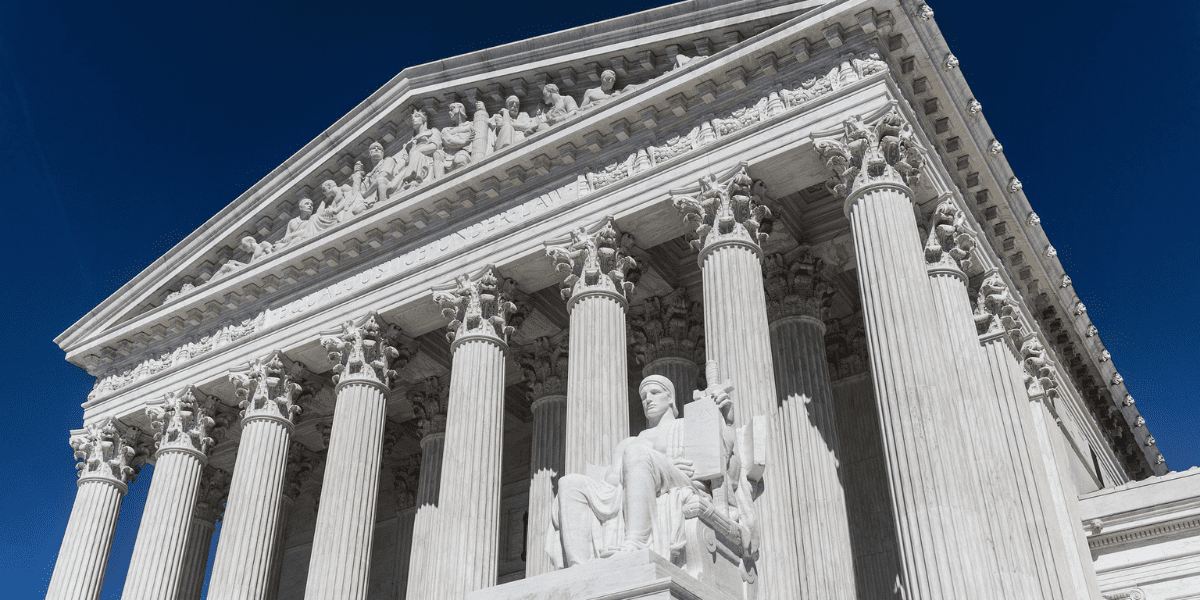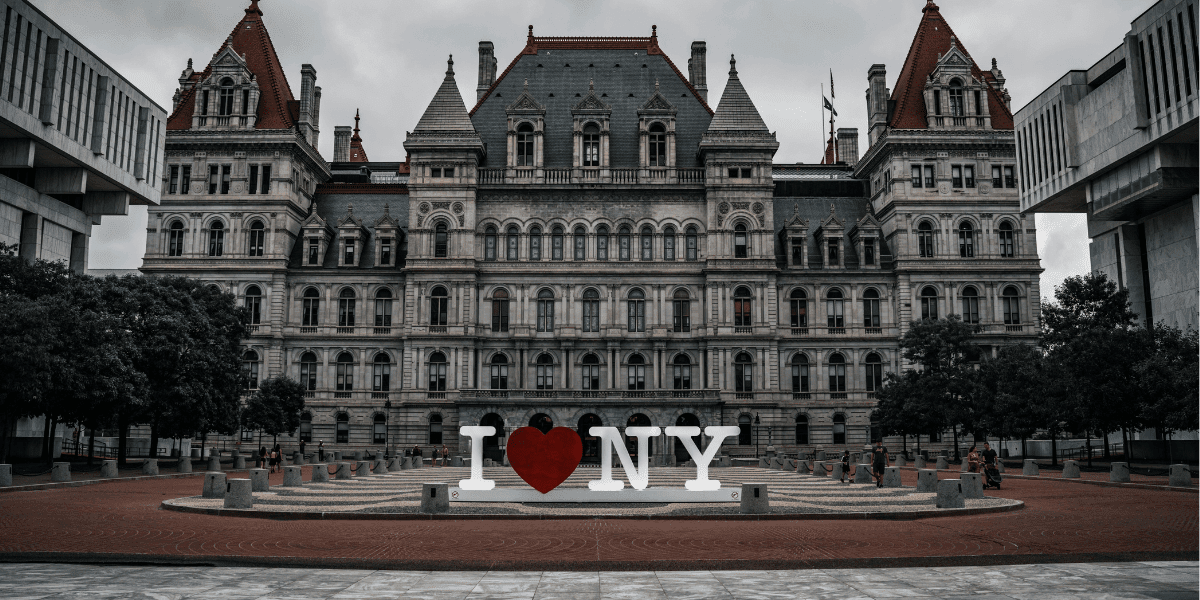After President Donald Trump issued Executive Order 14210 in February 2025, directing federal agencies to plan for and implement significant reductions in force (RIFs), millions of federal employees were faced with uncertainty. A coalition of unions, local governments, and non-profits sued the Trump Administration on the grounds that the President acted beyond the scope of his powers. Federal employees at risk of losing their jobs could pause for breath when a federal judge hit pause on the order. Now, by issuing a stay on July 8, 2025, the Supreme Court (SCOTUS) has hit play again.
From the outside, this all might look a bit chaotic—as if these different courts are fighting over the remote. So, what exactly is happening in the courts? Did the Supreme Court give its final answer on RIFs? What is a preliminary injunction? And: What is a stay?
No, the Supreme Court has not made a decision on the legality of RIFs; it has only addressed the preliminary injunction. Before we get into what SCOTUS has done, let’s review how we got here.
What Has Happened in the Courts with President Trump’s RIF Order so Far?
- Feb.11, 2025: President Trump issued Executive Order 14210, ordering federal agencies to “undertake preparations to initiate large-scale reductions in force (RIFs)” to further his “critical transformation of the Federal Bureaucracy.”
- April 28, 2025: The “plaintiffs”—the American Federation of Government Employees, AFL-CIO, et al. (federal employee unions representing in sum close to 1 million employees), local governments (Chicago, San Francisco, Baltimore, and others), and non-profit organizations (respondents alone represents millions of employees both private and governmental) sued the Trump Administration—the “defendants.”
- May 1, 2025: The plaintiffs filed for a temporary restraining order seeking to prevent the Trump Administration from moving forward with action Executive Order 14210.
- May 9, 2025: In an emergency hearing, Federal District Court Judge Susan Illston (Northern District of California) granted a temporary restraining order, which put a two-week pause on Executive Order 14210 in favor of the plaintiffs.
- May 22, 2025: Judge Illston extended the pause by granting a preliminary injunction in favor of the plaintiffs.
- May 30, 2025: The Trump Administration appealed the Federal District Court’s grant of the preliminary injunction to the U.S. Court of Appeals for the Ninth Circuit. The Ninth Circuit upheld the preliminary injunction issued by the District Court.
- June 2, 2025: President Trump filed an emergency application for a stay to the Supreme Court of the United States, which was accepted for review on July 8, 2025.
- July 8, 2025: The Supreme Court issued a short 8-1 decision delivered by Justice Kagan, with Justice Sotomayor concurring, and Justice Jackson dissenting, ruling in favor of President Trump, and thereby staying the enforcement of the injunction of the lower courts pending final disposition of the litigation. With this decision, the Trump Administration is free to continue with its plans to prepare for, initiate, and implement large-scale reductions of the federal workforce, terminating an anticipated large number of federal employees.
Ready to book your consultation? Click below to pay our consultation fee and book your meeting with an attorney today!
What Is a PRELIMINARY INJUNCTION and Why Do Courts Issue Them?
Think of a preliminary injunction as a judge hitting the legal pause button. The goal is to keep everything as is while the action is litigated.
Civil litigation can take a very long time. Sometimes, going from the initiating complaint to a trial on the merits takes years. In this case, plaintiffs argued (and the Government confirmed the expectation) that potentially tens of thousands of federal employees would lose their jobs—not to mention the millions more who might be impacted by cuts to agency departments and programs. After a hearing, Federal District Court Judge Susan Illston issued an injunction, hitting pause on the implementation of Executive Order 14210, i.e. pausing the agency’s progress on planning for and implementing these anticipated RIFs.
Why did Judge Illston issue a preliminary injunction? Judges consider four factors before issuing a preliminary injunction:
- Likelihood of success “on the merits” of the complaint
- Irreparable harm will be suffered without the injunction
- A balancing of equities and hardships weighing in favor of the party seeking the injunction; and
- Whether the injunction serves the public interest.
After a hearing during which the plaintiffs argued their request for an injunction, Judge Illston granted that injunction on all grounds. As she explained in her court order: it is likely that those suing the Trump administration will be successful, after which the RIFs will not be permitted. But in the meantime, permanent harm will be done to those employees who lost their job unless they are granted an injunction. Given she believes the President may be overstepping his constitutional powers, Judge Illston decided that injunctive relief is also in the larger public interest.
What Does It Mean for the Supreme Court to Issue a STAY?
A STAY issued by the Supreme Court temporarily stops a lower court from enforcing its injunction.
In this case, the lower courts ordered President Trump to hit the pause button on carrying out his executive order. With its decision, the Supreme Court ruled that the Trump Administration can resume play. The preliminary injunction is stayed, and, thus, the RIFs may proceed.
You can contact us 24 hours a day, 7 days a week via phone at 8885294543, by e-mail at info@tullylegal.com or by clicking the button below:
The Supreme Court’s stay is not a ruling on the case itself.
The merits of Trump v. American Federation of Government Employees lawsuit have not been decided, and SCOTUS has not commented on the legality of the executive order itself. Specifically, the Court stated, “We express no view on the legality of any Agency RIF and Reorganization Plan produced or approved pursuant to the Executive Order and Memorandum.”
Remember: preliminary injunctions and stays are both about what can and can’t happen before the final ruling is issued on the merits of the actual claims at issue in the complaint. It is still possible that the Trump Administration will not ultimately succeed in Court and the plans under Executive Order 14210 formulated by the Trump Administration will be deemed illegal.
There are other legal avenues available to the plaintiffs who lose their jobs in the interim to challenge those removal actions. But, in the meantime, President Trump is free to continue directing agencies to conduct large-scale reductions in their workforce and the agencies are free to formulate and implement those plans, consistent with the applicable laws.
Learn more about how the U.S. Supreme Court’s decision could impact federal employees and the options available to them here.
Federal employment is subject to laws and regulations that differ significantly from those in the private sector; consulting with a federal employment lawyer can make all the difference. Tully Rinckey’s team of dedicated federal employment attorneys is available to assist you today. Please call 8885294543 to schedule a consultation, or schedule a consultation online.
Tully Rinckey Partner Stephanie Rapp-Tully has spent her entire career helping public and private sector employees overcome unlawful personnel actions. Stephanie concentrates her practice on federal labor and employment law, routinely representing employees before United States District Courts, Appeals Courts, the Equal Employment Opportunity Commission (EEOC), and Merit Systems Protection Board (MSPB).








